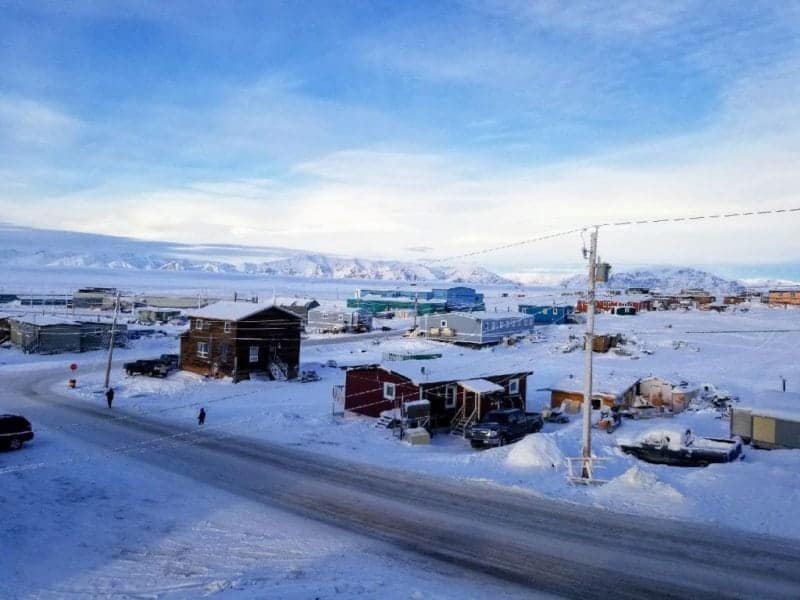Staff from the Department of Family Services, with two local people from the community, completed door-to-door surveys with 95 households in Pond Inlet March 6. Now they move on to Clyde River.
The objective of the survey, which will also be undertaken in Arviat and Gjoa Haven, is to better understand homelessness in the territory – specifically hidden homelessness.

The Department of Family Services' poverty reduction division conducted door-to-door surveys in Pond Inlet from Feb. 27 to March 6 to better understand homelessness in the community. The team will repeat those surveys in Clyde River, Arviat and Gjoa Haven in the coming months.
"The number that we get will be a fairly good representation of the community itself because we're sampling based on public housing, staff housing and other private households. So we're going to get as accurate a picture across the communities as we possibly can," said the department's director of poverty reduction Deatra Walsh.
The Inuit Health Survey 2007-2008 established that approximately 20 per cent of households in Nunavut provided shelter to the homeless, but those figures are 10 years old. Walsh said the reason for conducting the surveys is that the Government of Nunavut does not have up-to-date information on hidden homelessness, a category quite different from absolute homelessness.
"We know that many people in the territory, particularly in the smaller communities, don't present as absolutely homeless. These are some of the distinctions that are made," said Walsh.
Absolute homelessness, which has been numbered at about 100 people in the territory, includes people living in shelters, shacks or abandoned buildings. That figure, when it was released, caused an uproar across the territory.
"According to the know-it-all people in the government departments we have no homeless people in Pond Inlet. My definition of homeless and their definition of homeless are two completely different versions of what homelessness means," Tununiq MLA Joe Enook told Nunavut News in late 2016.
"According to the wisdom of government people, they're not homeless because they're inside somebody's house. In my humble opinion you are homeless if you don't have a roof over your head you can call your own, social housing or otherwise. Just because somebody is kind enough to put you up in their furnace room or their laundry room, or on the floor of their living room, apparently you're fine."
Enook's version of homeless is what Walsh and her team are seeking to better assess. Walsh says addressing homelessness is about understanding both populations.
"I'm always overwhelmed at how responsive people are when someone is knocking on your door saying, 'Hey, can I come in and talk to you about this thing?' But it's the most effective way to get a sense of where people are at. The people in Pond Inlet were amazing. Of course, the survey itself is voluntary and they're absolutely within their rights to refuse to do it, but we had very few refusals," she said.
The survey, along with getting a sense of hidden homelessness, also sought out the needs of the community, and suggestions for community-based solutions. Food security was also part of the conversation.
"We didn't start the survey with 'Do you identify as hidden homeless?' The point of departure was, 'Tell me how many people slept here in this house last night.' It's not going in with that premise of, 'This is what's happening,' said Walsh, adding the point is to gather information of people's actual lived reality.
The analyzed information collected by the poverty reduction division will feed into the desired outcomes of the Makimaniq Plan 2 (2017-2022): A Shared Approach to Poverty Reduction. Outcome 8 of that plan is increased access to housing.
One key partner is the Nunavut Housing Corp., and the data analysis provided by the poverty reduction division will help the corporation achieve its goals as outlined in its Blueprint for Action on Housing.
So far, Walsh, who can't speak specifically about what was heard in Pond Inlet, says there is hidden homelessness, there is couch-surfing.
The plan is to wrap up the survey in Gjoa Haven in May, then analyze the data.
The work is being supported by the federal government's Homelessness Partnering Strategy.